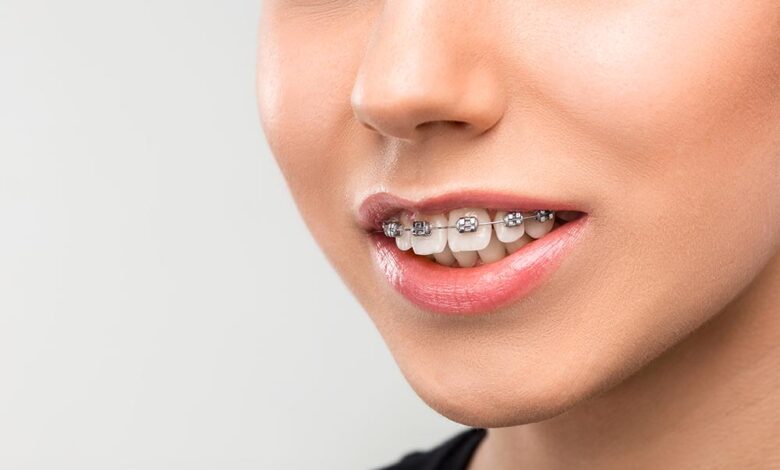What Is An Overbite And How To Rectify Overbites

An overbite is one of the most common issues that can be fixed with orthodontics. Because of the potential for physical and mental health issues, overbites are generally corrected as early in the orthodontic process as possible. The severity of an illness determines the approach and length of treatment.
The overbite: what is it?
This is called an overbite, when the upper jaw and teeth protrude over the lower jaw and teeth. Overbites are a common kind of malocclusion seen by dentists and orthodontic specialists. Both vertical and horizontal overbites exist. When the upper teeth overlap the lower ones, this is called an overbite, whereas when the upper teeth protrude over the lower ones, this is called an overjet. Patients may exhibit symptoms of both conditions.
Overbites can be categorized in two ways: dental and skeletal. Overbite can be caused by jawbone (bony) or teeth (dental) issues. When it comes to kids’ teeth, overbites are the most typical problem.
When does an overbite develop?
Why some people get an overbite, and others don’t is a mystery. Uneven growth of the jawbone in certain people is a congenital disability. Others may have an overbite or underbite because their jaws are disproportionately huge or small. Since heredity plays a significant role, it stands to reason that if both parents required orthodontic treatment for an overbite, the offspring would likely do so.
The environment, and not heredity, is to blame for some of the most extreme overbites. Beyond the age of five, the bone and front teeth can be pushed forward if a child uses a dummy or routinely sucks their thumb or finger(s). The lower jaw and teeth expand to make room for the protruding tongue, while the form or other parts of the hand can reposition the upper jaw and teeth. The proper growth of the jaw and teeth depends on the youngster giving up thumb-sucking by age five.
An overbite can develop in adolescence or adulthood, even if ot present in childhood. An overbite can be created from habits like regularly chewing fingernails or pens or tooth loss without replacement.
Using Braces to Treat an Overbite
Most cases of overbite can be corrected successfully with orthodontic braces. X-rays are a crucial aspect of the evaluation process because they reveal information about the overbite and the position of the teeth and jaw. The upper and lower dental arches are then fitted with braces. What braces do you need for an overbite?
Initially, the archwire will work to align and straighten the teeth. Elastics (small rubber bands) may gradually move the jawline into the correct position during the second phase of braces treatment. The bars are placed on the brackets in an upward or downward direction, depending on the order in which the teeth and jaw need to be moved. When it’s time to eat, drink, or brush your teeth, just pop off the bands and put them back on. The bars should be worn continuously to ensure a steady pressure is delivered. Alternating between wearing and not wearing them can irritate the jaw and teeth.
Finally, a retainer or permanent wire holds the teeth in new positions.
Ceramic or lingual (inside) braces or Invisalign aligners are more discreet solutions for some patients who need their overbite corrected. Because not every case calls for every treatment option, it’s best to talk to your orthodontist before making a final decision.
How Soon Can Treatment Be Started?
Orthodontic therapy for an overbite is most effective the earlier it may begin. Patients’ teeth will be harmed if they clench their jaw or grind at night. Patients with certain overbites may develop cavities and gum disease because it is more challenging to clean their teeth properly.
Chronic head, neck, or jaw discomfort can make daily activities difficult or impossible. When the jaw is properly aligned, braces can alleviate these health issues for certain patients.
When Wearing Braces, How Long Does It Take to Correct an Overbite?
When it comes to orthodontic issues, a severe overbite is one of the most time-consuming to correct. Overbite is not always the sole issue. Overcrowding and crooked teeth are issues that need to be addressed, given that the patient is likely to have both.
Depending on the severity of the overbite, braces may need to be worn for a minimum of two years. A retainer is worn after removing braces to keep teeth in their new positions.
Do Overbites Ever Get Fixed With Just Braces?
Surgical jaw repositioning may be necessary in extreme cases of skeletal overbite and jaw difficulties in adults. Brackets can’t be utilized alone; surgery or teeth extraction may be required. When extractions are necessary, orthodontic patients are referred to an oral surgeon or dentist.
Growing jaws help the braces shift the jaw into place, reducing the need for surgery in children and certain teenagers.
Children with crowded teeth and tiny jaws may benefit from early treatment with a palate expander. Having a broader jaw reduces the difficulty of using braces to reposition teeth and eliminates the need for tooth extractions.



